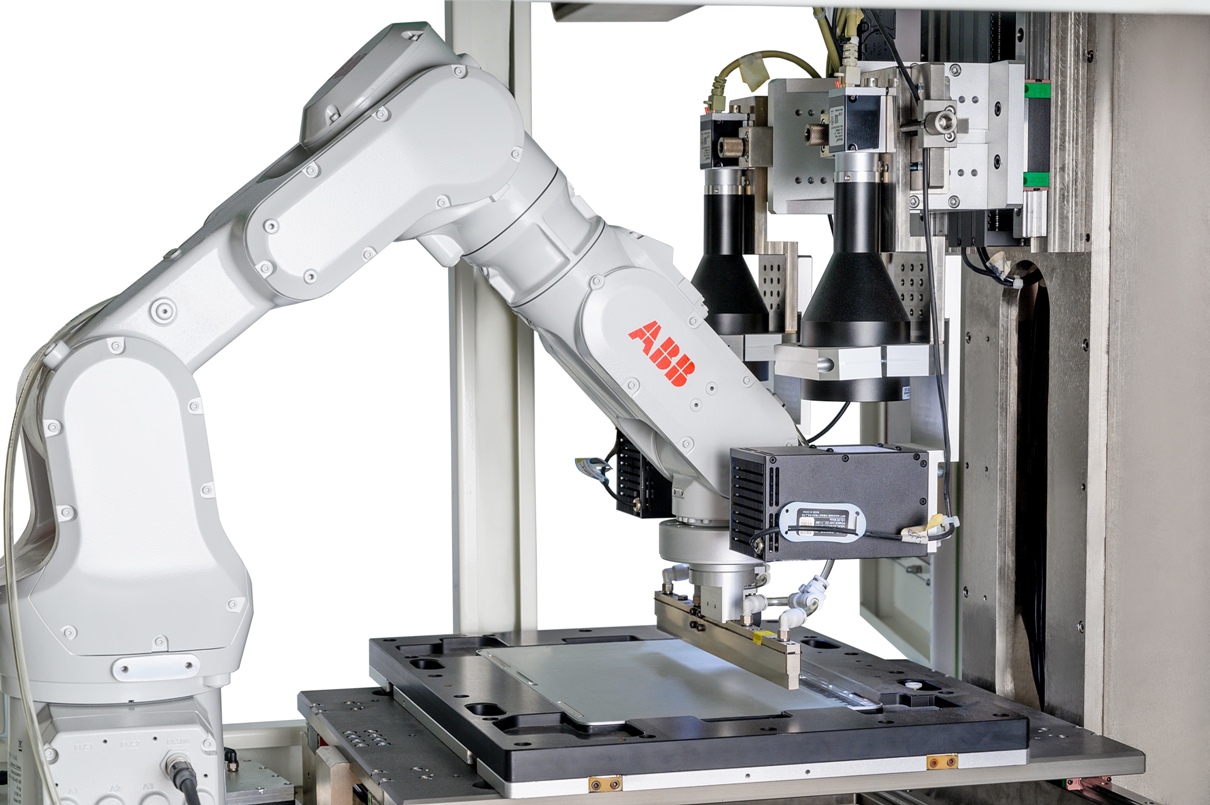Collaborative robots with software for enhanced high speed accuracy reduce contamination risk in cleanrooms
ABB Robotics has launched software to transform speed and accuracy in electronics assembly. The High Speed Alignment software is the first to offer manufacturers the ability to increase the speed of 6-axis robots by 70 percent, and accuracy by 50 percent – significantly reducing time-to-market while increasing accuracy levels.
The PC-based software includes Visual Servo-ing technology using one or more cameras, combined with a computer vision system, to control the position of the robot relative to the workpiece. As the robot is moving, the cameras capture images continuously, while the computer vision system takes the information, cross checks and adjusts the robotic movements to deliver 0.01 to 0.02 millimeter precision.
The software can be used with the IRB 1300 and the IRB 920T SCARA robots. The IRB 1300 combines a high payload of 12 kilograms and a reach of 1.4 meters, allowing it to handle more and heavier objects at the same time, enabling more products to be produced per hour and increasing productivity. The IRB 920T SCARA (Selective Compliance Articulated Robot Arm) robot includes new options with IP54 and Cleanroom compatibility, ensuring stable production in dusty, wet and cleanroom environments.
Healthcare Applications
Modern robots are not just found in manufacturing environments, they are increasingly incorporated as components of medical devices in laboratory environments, supporting anything from R&D in the pharmaceutical industry or universities to healthcare testing in medical facilities. Today’s robots can perform multiple tasks, are easy to program, and may even be able to manage other laboratory equipment.
SCARA robots fit well into the confined spaces typical of pharmaceutical manufacturing facilities. Whether they are dealing with tablets, test tubes, or syringes, SCARA robots are fast and accurate, performing articulate point-to-point movements, such as picking and placing, parts transfer, and parts handling.
The ABB YuMi collaborative robot is ideal for general laboratory work and can be integrated into a device to undertake a range of repetitive, delicate and time-consuming laboratory activities, such as dosing, mixing and pipetting tasks, sterile instrument kitting and centrifuge loading and unloading. Devices integrated with robots may also be able to support temperature-controlled processes by automatically inserting and removing samples to and from special ovens to ensure they are incubated under the correct conditions.
As an example of such laboratory applications, American company Copan Diagnostics is using YuMi-based HEPA filtered bio-safety workstations to manage tissues, bone and sterile fluid samples, as well as transporting traditional swabs and blood cultures. After the technologist scans a barcode, the robot automatically presents a sequence of plates and materials for sample inoculation.
Untouched by human hands
The expanding ability of robots to take over a growing range of tasks throughout the production process, from laboratory testing and product development, to manufacturing and then sorting and picking finished products for packing and shipping, can help make the mantra of ‘untouched by human hands’ a reality.
Contamination incidents and subsequent product recalls can be calamitous for the reputation of any business, and stringent legislation places great emphasis on traceability as a means of combatting counterfeiting of pharmaceuticals and medical devices.
Automated systems provide an ideal way to help minimize opportunities for human error, counterfeiting or tampering. For instance, robots with integrated vision can now scan packaging for barcodes that contain all the tracking and transaction data for the products.
- UK manufacturing steps up to COVID-19 crisis - April 2, 2020
- Clustering Innovation - March 12, 2020
- A Global Monitor - March 6, 2020

